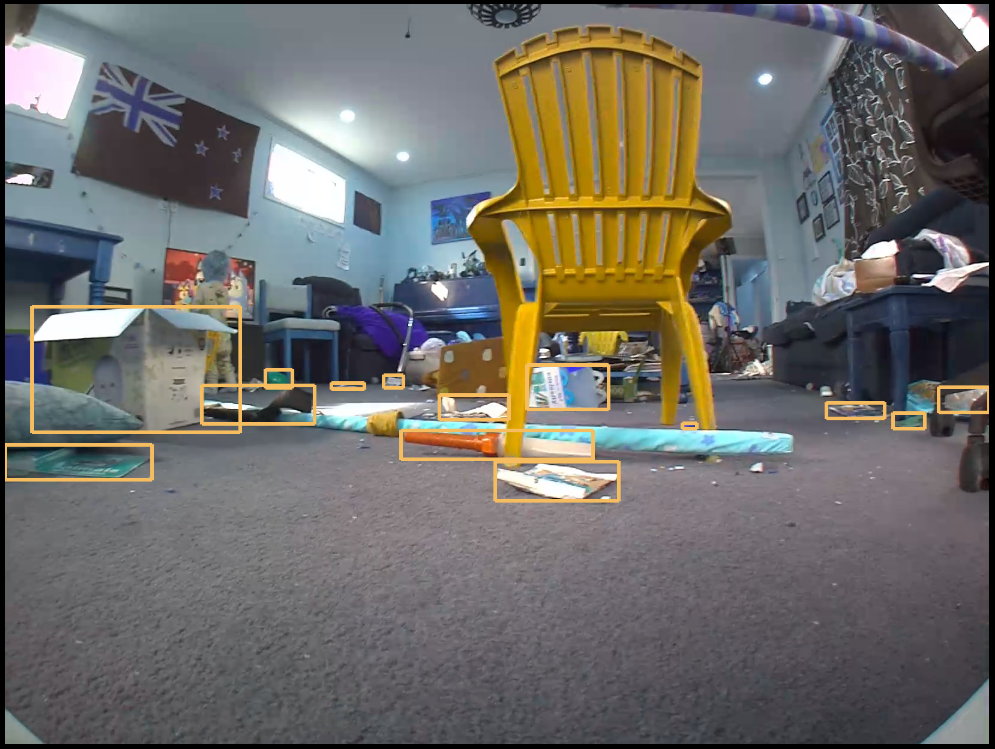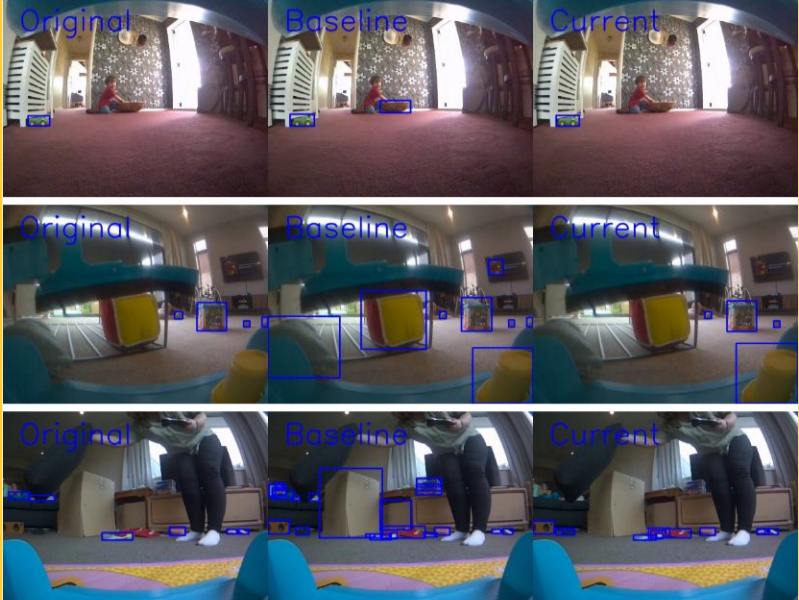Embedded Toy Detection
Real-time toy detection for mobile robots using advanced object detection models
This research project enhances a baseline object detection model through advanced techniques such as pseudo-labelling, data engineering, and knowledge distillation. It develops an efficient and scalable toy detection system tailored for robotics applications. Leveraging state-of-the-art models like Co-DETR, the system pseudo-labels unannotated data to expand the dataset and train a larger model (DAMO-YOLO-M) to improve detection accuracy. The deployment model (DAMO-YOLO-Tiny) is distilled from the larger variant for lightweight, real-time inference on resource-constrained robotic platforms.
Key Contributions
- Pseudo-Labelling: Increased dataset size and diversity by annotating unlabelled data using Co-DETR.
- Curriculum Learning: Implemented structured training strategies for DAMO-YOLO-M, leading to robust detection performance.
- Knowledge Distillation: Compressed the larger model (DAMO-YOLO-M) into a lightweight version (DAMO-YOLO-Tiny) for efficient deployment.
- Performance Gains: Achieved a significant improvement in detection accuracy, raising mAP50 from 34% to 42%.
- Real-Time Deployment: Deployed on Nvidia DeepStream, integrated seamlessly with ROS2, and tested on mobile robots.


Workflow and Implementation
-
Dataset Augmentation:
Pseudo-labelled unannotated images with Co-DETR, creating a larger, high-quality dataset. -
Model Training:
Trained DAMO-YOLO-M with curriculum learning to improve robustness. Applied knowledge distillation to develop DAMO-YOLO-Tiny for efficient real-time inference. -
Model Deployment:
Integrated the optimized model with ROS2 and deployed on Nvidia Jetson Nano using DeepStream SDK for mobile robotics applications.
Results
-
Detection Accuracy:
Improved from 34% to 42% mAP50, ensuring reliable and accurate toy identification. -
Deployment Performance:
Achieved real-time inference at 15 FPS on Nvidia Jetson Nano.
Note
The research and experimentation for this project was done in conjunction with my ML intern at Clutterbot Technologies Pvt. Ltd under the mentorship of Mr. Sanchit Tanwar. As such, I am unable to share the source code due to confidentiality reasons.